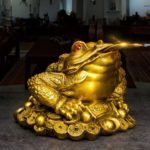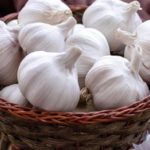The people of Southern Vietnam have many unique customs, such as cooking sweet rice balls soup during Tet Holiday, visiting and cleaning the graves of ancestors, and erecting a “cay neu” (a tall tree-like structure) during Tet. Interestingly, Southerners also have a unique way of offering sacrifices by including a “tam sen” set on the altar. Let’s explore the details of this intriguing “tam sen” tradition.
For reference: What is the date for the God of Wealth’s birthday in 2024? What should we buy on this occasion?
1 What is Tam Sen?
The “tam sen” set, also known as the “tam sinh,” is a unique cultural feature of Southern Vietnam in the custom of worshipping the God of Wealth.
Tam Sen can be interpreted in three ways:
The first meaning, from a cultural perspective, symbolizes earth, water, and sky, representing the environment in which we live.
 Explaining the concept of Tam Sen
Explaining the concept of Tam Sen
The second interpretation is based on the Lăng Nghiêm Sutra of Buddha, representing noãn sinh (egg-born), thai sinh (womb-born), and thấp sinh (born in damp places like shrimp and insects).

The “tam sen” set carries two main significances. Firstly, it is a way to pray for peace and prosperity for the family, invoking the blessings of heaven and earth. Secondly, it demonstrates the sincerity of the host, who has taken the time and effort to prepare and arrange the offerings.
In addition to being used in worshipping the God of Wealth, the “tam sen” set is also presented in ceremonies for the God of Land, seeking safety during construction, or at full-month parties to express gratitude to the twelve fairy midwives for a safe delivery and healthy baby.
Tam Sen is understood as three creatures living in three completely different environments:
-
A creature living on land, symbolizing Thổ (earth)
-
A creature living in water, symbolizing Thủy (water)
-
A creature living in the sky, symbolizing Thiên (heaven)
For reference: 3 most popular traditional Southern cakes
2 The Most Standard “Tam Sen” Set for Worshipping the God of Wealth
Main Offerings
A standard “tam sen” set must include three elements:

A piece of boiled meat represents “thai sinh” and the element of Earth.
Three shrimps or other seafood like crab and fish represent “thấp sinh” and the element of Water.
A boiled duck egg represents “noãn sinh” and the element of Heaven, as ducks have feathers and can fly in the sky.
Missing any of these elements would render it incomplete, and the sacred meaning would be lost.
Accompanying Offerings for the “Tam Sen” Set when Worshipping the God of Wealth
In addition to the “Tam Sen” set, other offerings for the God of Wealth include:
-
Fresh cúc kim cương flowers.
-
A tray of five types of fruit.
-
Incense in the shape of dragons and phoenixes.
-
Candles.
-
White rice in a jar.
-
Salt in a jar.
-
Dried northern tea.
-
Glutinous rice wine.
-
Clear water.
-
Special paper for land-breaking ceremonies.
-
Cookies and candies.
-
Fresh betel and areca nuts.
-
Red sticky rice with mung beans.
-
White bean sweet soup.
-
Bánh hỏi (rice vermicelli woven into thin sheets).
-
White porridge.
Additionally, in many places, there is a custom of offering sticky rice cakes on the 10th day of the first lunar month.
In conclusion, I hope that people from the South, in particular, and other regions, in general, have learned how to properly prepare the “tam sen” set to get ready for the upcoming God of Wealth’s birthday celebration.
Why should you put garlic on the altar? The surprising answer that brings luck into your home
Most people understand the significance of venerating their ancestors and deities such as Thần Tài and Thổ địa. It is a crucial practice that must be performed with care and diligence. If not done correctly, it can result in the loss of blessings, as well as invite misfortune into one’s household, making every aspect of life difficult.





































